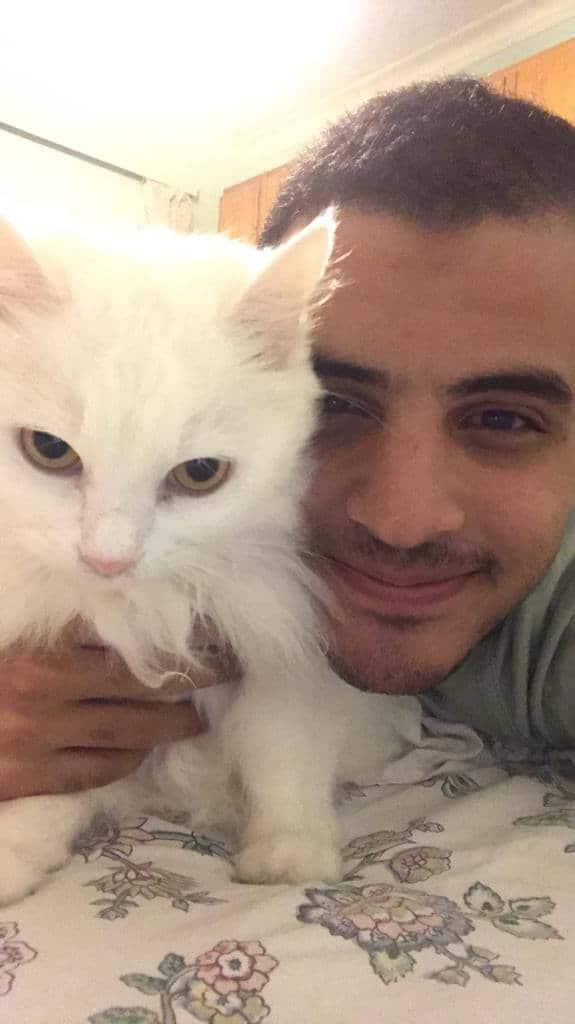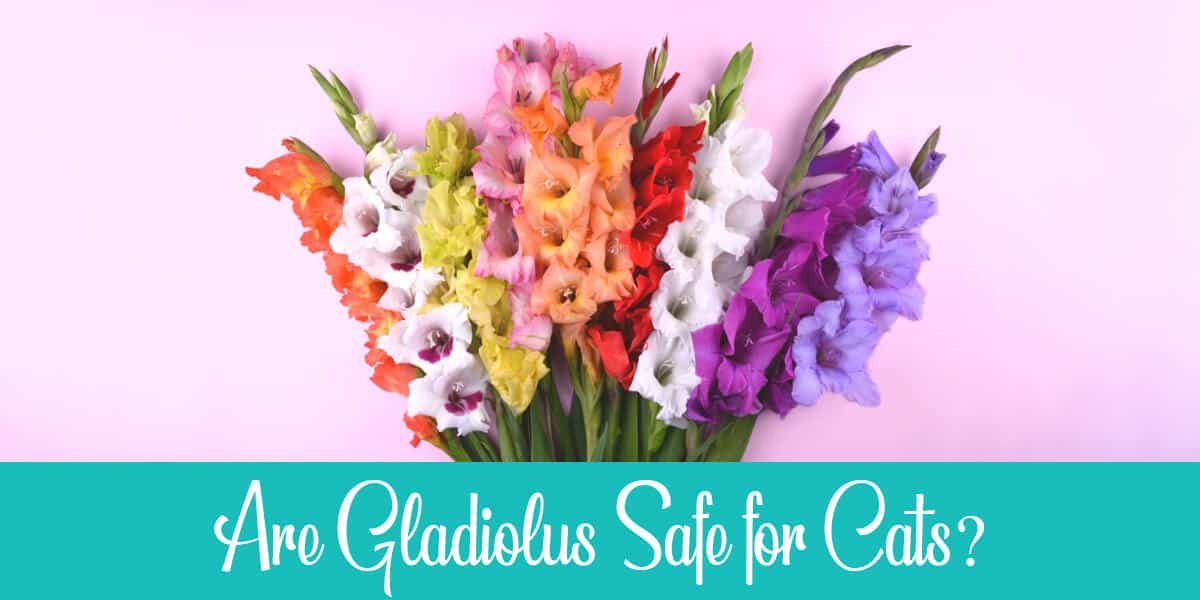Cats love to scratch and bite everything we own, one of the things they enjoy munching on is plants. However, not all plants are safe for our furry little friends.
Gladiolus is one of those dangerous plants that your cat should avoid. Cats are carnivores with sensitive digestive systems, so when they eat a plant, especially one that is toxic to them, it can lead to poisoning.
Table of Contents
Are Gladiolus Poisonous to Cats?
Yes. Gladiolus are poisonous to cats, but they’re not fatal unless your cat ingests a significant amount. The bulb or corm is the most toxic part of the plant.
It causes vomiting and diarrhea that makes your cat dehydrated. The toxins can cause damage to your cat’s liver, kidney, and heart. You should take your cat to the vet within 12 hours after eating gladiolus.
Which Parts of Gladiolus Are Poisonous to Cats?
The Gladiolus plant belongs to the Iridaceae or iris family. When your cat eats any part of it, it will often experience vomiting and diarrhea, leading to dehydration if not treated properly.
Dehydration is not only water loss. Loss of essential minerals like sodium, potassium, and chloride can cause many complications and be fatal.
While the whole plant is poisonous, the bulb is considered the most toxic part of a gladiola. So, make sure to store the bulb in a safe place that your cat can’t reach after you remove the plants from the ground.
Depending on the amount of gladiolus your cat has ingested, it causes a range of symptoms related to the gastrointestinal tract, heart, liver, and kidneys.
Related: Is Hibiscus Toxic to Cats?
Signs of Gladiolus Poisoning in Cats
The most obvious way to know that your cat is in danger of being poisoned by gladiolus is seeing it eating one. That’s when you should take the plant and your cat directly to the vet without waiting for any symptoms to appear.
But if you missed that part, these are some of the signs that would indicate that your cat has eaten gladioli while you were not looking.
Gladiolus causes ulcerations to your cat’s stomach and intestine. Those ulcerations manifest themselves in many forms, such as finding your cat losing appetite and refusing their favorite food.
Also, you can notice that your cat is vomiting and having diarrhea that often comes bloody. That will cause your cat to drool excessively and drink more water than usual because of dehydration.
Recommended: Want to make sure your cat is always well hydrated? Here are some safe alternatives to sub q fluids for cats.
Bad breath is another sign that might indicate that your cat has ingested a poisonous plant.
Your cat’s behavior is also a critical indicator that something is going wrong, so if you find that your cat is hiding more often, that might tell you that it’s suffering from gladiolus poisoning.
Urine discoloration, either dark or bloody color, is also a warning sign to tell you that gladiolus poison has affected your kidneys, along with frequent or inability of urination.
You should carefully notice any of the above signs to give your vet the best history to initiate the proper treatment.
How Do Vets Diagnose Gladiolus Poisoning In Cats?
Your cat has the best recovery rate if proper treatment starts in the first 24 hours after ingestion of gladiolus. After that, the vet will take a short history from you before running some more tests to decide on the severity of the case.
So you’ll be asked about the number of gladioli ingested, which parts, and how long the cat has been experiencing symptoms.
A blood sample will be taken to obtain a complete blood count and measure urea and electrolyte levels in your cat’s blood. This will be helpful to check how dehydrated your feline is.
Also, a urine sample will be collected to measure your cat’s glucose, amylase, and lipase levels.
An x-ray will be done to exclude any damage to your feline’s stomach, such as ulcerations. However, suppose parts of the gladiolus are suspected to be still in your cat’s stomach. In that case, the vet will inspect them and remove the plant parts by endoscopy after generally anesthetizing your cat.
The vet will initiate your cat’s treatment plan for gladiolus poisoning when everything’s cleared up.
Must Read:
– Are gardenias toxic to cats?
– Are gerberas toxic to cats?
How Do Vets Treat Gladiolus Poisoning In Cats?
The first step to treat your poisoned cat will be inducing vomiting to remove any gladiolus parts that might be still in your cat’s stomach.
The second step will be washing out toxins from your cat’s system through gastric lavage using activated charcoal.
The next step will be rehydrating your cat and fixing any electrolyte imbalance through IV fluids over a few hours or through the night if needs be.
If your vet sees any signs of ulceration, he will prescribe you some medicines like famotidine to protect your cat’s gastrointestinal tract.
If your cat is experiencing any cardiac signs like murmurs or arrhythmia, this might take several days to treat and keep your cat under observation.
Will My Cat Be Fine After The Gladiolus Poisoning?
If your cat has eaten a small part of gladiolus with no bulb and was taken to the vet within 6 hours, then it has a better chance of recovering perfectly fine within a few hours.
However, if your cat has ingested a large part, the treatment plan might take up to several days, especially if it includes the bulb or the corm of gladiolus.
In most cases, gladiolus poisoning is nonfatal when managed quickly.
Related: Is Nemesia Toxic to Cats?
Conclusion
So, are gladiolus poisonous to cats? The short answer’s yes. While some plants are safe for your cats, like the Rattlesnake plant, Spider plant, and Parlor palm, gladiolus isn’t on the safe list. So you should identify those poisonous plants and avoid having them in your cat’s playing space.
Most importantly, you must be able to identify the signs of danger in case your cat is experiencing gladiolus poisoning. That will enable you to move quickly and take your cat to the vet as soon as possible to give your cat the quickest proper treatment and the best recovery chances.

I’ve been living with cats since 2008 and I can confidently say I have more feline friends than humans lol. I currently live with 5 cats in different life stages; two of them are less than one year old, one is 2-ish years old and the oldest two are 9-ish years old. I’ve developed a strong bond with cats over the years and I’m eager to share my experience through this blog. You can learn more about my cats here.

